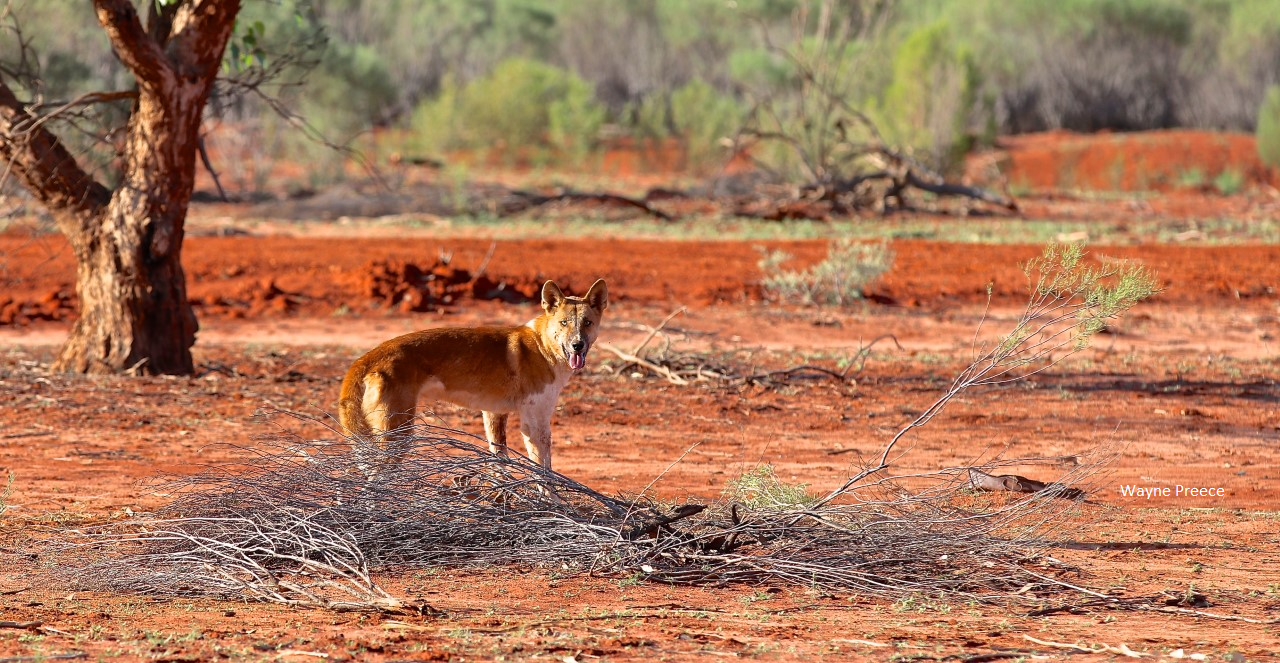
Certified organic properties in the Northern Territory can now excise areas for wild dog control. Photo credit Wayne Preece
GUIDELINES are being rolled out in the Northern Territory to allow organically certified cattle properties to bait for wild dogs and remain compliant with their certifying body.
Additional plans for wild dog management were outlined to landholders at a best practice wild dog management online forum hosted by the Northern Territory Cattlemen’s Association and the National Wild Dog Action Plan.
Guest speakers were National Wild Dog Action Plan Management Coordinator Greg Mifsud, NT Government Plant Biosecurity Branch senior compliance inspector Mel Frousheger and NASAA Certified Organic (NCO) general manager Tammy Partridge.
NCO and ACO Certification originally worked with South Australian State Wild Dog Coordinator Heather Miller and Greg Mifsud to develop management plan templates for wild dog management on organically certified properties in South Australia.
The templates were created in accordance with the Guidelines for Feral Animal Control on Organic Properties developed by the National Wild Dog Action Plan.
NCO has amended its management plan template for wild dog baiting to be able to be used on NT properties.
“The management plan template covers how to monitor and manage a wild dog problem through exclusion areas with baiting the preferred management tool,” Mrs Partridge said.
“Certified organic operators should check with their certification body to ensure their proposed management plan is deemed compliant by them.”
Baiting can be undertaken by excluding areas from certification by creating fenced enclosures wild dogs can access but livestock cannot and securing baits within those enclosures so they cannot be moved onto certified land.
Tethering baits by either using canid pest ejectors or securing to an embedded steel dropper in the excluded zone means the wild dog will ingest the bait whilst inside the excluded zone.
The ingested 1080 bait is broken down rapidly as the body decomposes, leaving no residual poison in the environment.
“Using canid pest ejectors means less area in hectares needs to be taken out of certification to be able to bait adequately than in previous times when the baits were not tethered,” Mrs Partridge said.
“People have been excluding an area of land near a water point or an area they know they are receiving high wild dog traffic, and they are using that area to both manufacture with a permanent drying rack and laying the baits.
“The baits can be dried and transported with transport, storage and labelling abiding by NT legislation and ensure you have the current supporting documents.”
Farm map
A farm map with GPS references of the non-certified exclusion areas needs to be maintained.
“The key is you must remove that area where you intend to bait out of your certification and take steps to limit the movement of those baits out of those fenced areas,” Greg Mifsud said.
“They really should be tied with wire or use ejector devices. It is possible to bait and there is no reason with that organic management plan you can’t justify the purpose.”
Mrs Partridge said feedback on the management plan template was positive from operators in South Australia.
She said growth in organic certification nationally was tracking at over 5 per cent a year.
NT Government Chemical Services senior compliance inspector Mel Frousheger said all bait allocation assessments were done on an individual basis.
“We would be happy to discuss possibly increasing numbers if pastoralists felt they need increased bait numbers for a period of time,” Ms Frousheger said.
“Having comprehensive records of sightings, tracks and any stock damage could help in the validation for increased bait numbers above the standard base rate (square kilometres of property divided by three across two baiting rounds, or the number of watering points x 25 across two baiting rounds).”
Mr Mifsud said seasonal asset protection involved undertaking additional control prior to calving at water points, tracks and uncleared bushland to limit the risk of predation.
“Ideally these programs should start before cows start calving, to reduce wild dog numbers in the paddock before the first calf hits the ground,” he said.
“These tactics are useful in and around young cattle and weaners as they are more vulnerable to dog predation in absence of protection from their mothers and older cattle.
“However, with only 45 per cent of the state under pastoral lease, annual baiting programs to reduce wild dog and dingo populations were also required to manage any migration of wild dogs and dingoes from uncontrolled state and indigenous lands that make up the remaining 55 per cent of land in the NT.”
A Northern Territory government survey identified the average calf/weaner loss to wild dogs was 4 per cent.
“According to the NTCA, 600,000 head are turned off each year so a reduction of 1 per cent in calf loss attributable to wild dogs would yield an additional 6000 calves to the Northern Territory beef industry,” Mr Mifsud said.
For more information on the guidelines click here.

This is horrible news, I can’t fathom how anyone could certify “organic” beef with a chemical that has been banned in every country except Australia- the people in your government should be ashamed. Greed over health and the environment. It’s an indiscriminate poison.